Many moons ago we bought a book  at the Roman Museum in Cirencester by Mark Grant as we thought it might be fun to revive some of the recipes and provide the children with a Roman meal or two.
at the Roman Museum in Cirencester by Mark Grant as we thought it might be fun to revive some of the recipes and provide the children with a Roman meal or two.
The Romans are thought to have brought vines to Bordeaux in approximately 50 AD and many etymologists believe that Bordeaux’s Cabernet Sauvignon relates to the Biturica grape that the Roman poet Pliny recorded in the year 71 A.D.
There is a great recipe which we adapted for barbecued tuna which uses the Roman sauce garum (we altered this to make our own version of vinaigrette). It’s a deliciously simple dish and is wonderful for alfresco eating.
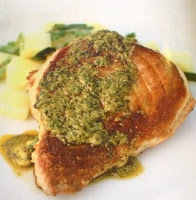 Roman Barbecued Tuna Steaks
Roman Barbecued Tuna Steaks
4 tuna fillets
3 tbsp vinegar
2 tbsp anchovy paste
9 tbsp olive oil
4 spring onions, chopped
1 tsp pepper corns, crushed
hand full of fresh mint, minced
Put the vinegar, anchovy paste, olive oil, spring onions, mint and pepper into a jar and shake well to make a vinaigrette. Brush your tuna fillets with the vinaigrette and then grill them over a hot barbecue. Serve with the remains of the vinaigrette.
One thing I hadn’t realised 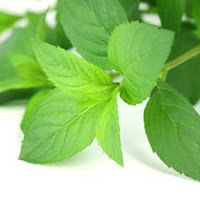 was that it was Roman cooks who created mint sauce! Apicius, in his famous cook book written in the first century, lists mints in many dishes. They are also responsible for spreading the herb throughout Europe.
was that it was Roman cooks who created mint sauce! Apicius, in his famous cook book written in the first century, lists mints in many dishes. They are also responsible for spreading the herb throughout Europe.
The Romans believed that by eating mint, you increased your level of intelligence and strangely enough in California the University there shows that it increases concentration! Some companies in Japan pipe mint oil through the air conditioning systems to invigorate workers-increasing productivity!
In the Middle Ages you would find mint in most monastery  gardens as it was used as a medicinal herb which was used to cure mouth sores, whiten teeth, heal dog bites and wasp stings. It was also used to stop milk from curdling and to repels mice and rats. Mint is quite a good insect repellent too.
gardens as it was used as a medicinal herb which was used to cure mouth sores, whiten teeth, heal dog bites and wasp stings. It was also used to stop milk from curdling and to repels mice and rats. Mint is quite a good insect repellent too.
The name Mint comes from the Latin word mentha, which is rooted in the Greek word minthe. Minthe was a Greek nymph who was transformed into a mint plant. In Greek mythology, Minthe’ beauty attracted the eye of Hades, god of the Underworld.
When Persephone, his wife, discovered this she transformed Minthe into the lowly mint to be trodden underfoot. Hades couldn’t reverse Persephone’s curse, but he did soften the spell by giving the m int plant the pungent sweet smell so that the little herb was treasured amongst men.
int plant the pungent sweet smell so that the little herb was treasured amongst men.
There are about 25 species of mint and around 600 different varieties. Native to the Mediterranean and western Asia, mints interbreed so easily it is often hard for even the experts to distinguish and separate all the varieties. This confusion dates back as far as the 9th century when a monk proclaimed he “would rather count the sparks in Vulcan’s furnace than to count the varieties of mint.”
One of my favourites is Eau de Cologne Mint (Mentha x piperita f. citrata) which is used in the makin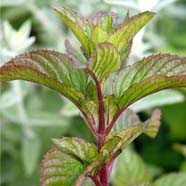 g of the famous Eau de Cologne.
g of the famous Eau de Cologne.
Cologne is the name that the French gave to the city of Köln in Germany and the origins of Eau de Cologne are actually rooted in Italy.
Gian Paolo Feminis, a barber from Val Vigezzo, left his Italian homeland to seek fortune in Germany where he created a perfume water, called Aqua Admirabilis.
This Aqua was made from grape spirits, oil of neroli, mint, bergamot, lavender and rosemary. In 1709 he named his Aqua Eau de Cologne in honour of the town.
Eau de Cologne was the favourite of Louis XV’s mistress, the Comtesse du Barry and Napoleon Bonaparte liked the fragrance so much that he adapted the recipe for himself.
Before his exile he would use 60 bottles a month of the cologne and he was so addicted that he  even had bottles of cologne designed in the shape of slim parchment rolls so that he could slip them into his boots during his military campaigns. Today Eau de Cologne is the world’s oldest and most continuously produced fragrance.
even had bottles of cologne designed in the shape of slim parchment rolls so that he could slip them into his boots during his military campaigns. Today Eau de Cologne is the world’s oldest and most continuously produced fragrance.
The ideal wine to pair with your Roman tuna would be a Bordeaux Clairet. Clairet is not a Rosé. It is a very different creature indeed and has its own AOC: Bordeaux Clairet to regulate its production. The word Clairet is the French for clear and this is where our word Claret comes from. A couple of centuries ago all clarets were clairets and the English adored them.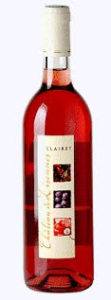
The grape varieties used in Bordeaux Clairet are the same as those in Red Bordeaux: Cabernet Sauvignon, Merlot, Cabernet Franc, Petit Verdot and Malbec. Bordeaux Clairet is darker than Bordeaux Rosé and has less tannins, has more fruit, power and structure.
It’s maceration (time spent on the grapes) can be up to 2 days and beyond – compared to the 4 or 5 hours that a Rosé spends. I spotted a quote recently that sums up Clairet if you haven’t come across it before: “Clairet is like Rosé on steroids.” They have great aromatic power and being fuller bodied are brilliant with food.
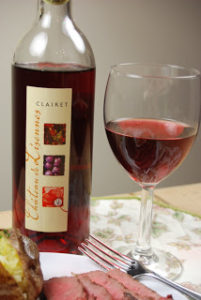 Clairet du Chateau de Lisennes 2005 (£6.35) is a remarkable clairet and is one of the best that Bordeaux offers, winning the gold medal in Brussels in 2006. The Chateau is family run and has been in the Soubie family for 4 generations. The fragrant wine is a deep raspberry pink with violet reflections.
Clairet du Chateau de Lisennes 2005 (£6.35) is a remarkable clairet and is one of the best that Bordeaux offers, winning the gold medal in Brussels in 2006. The Chateau is family run and has been in the Soubie family for 4 generations. The fragrant wine is a deep raspberry pink with violet reflections.
The aroma is complex; it has raspberry, peach and spice overtones with a hint of mint and lemon. It is soft and full, and the fruity taste of blackberries, redcurrants and raspberries explode in the mouth giving intense round flavours.
Jean-Luc Soubie currently runs the estate together with his father who is also the mayor of their village, Tresses. The Château takes its name from the clay and limestone soils of the vineyards as the old French word for clay is “glise”.
The vineyards themselves date back to 13th Century and the Clairet is made from 50% Merlot, 30%Cabernet Sauvignon and 20% Cabernet Franc grapes.
The Château de Lisennes has a history of mixed farming as well a s wine making. Dairy cows and pigs were reared there as well as wheat and potatoes. In the Middle Ages, vegetables were grown there between the wide rows of vines. Orchards surrounded the grapes and fruit and wood were sold at market. As time marched on the Château concentrated on making wines and nowadays its acres are full of grapes.
s wine making. Dairy cows and pigs were reared there as well as wheat and potatoes. In the Middle Ages, vegetables were grown there between the wide rows of vines. Orchards surrounded the grapes and fruit and wood were sold at market. As time marched on the Château concentrated on making wines and nowadays its acres are full of grapes.
Clairet du Chateau de Lisennes lends itself very nicely to accompany many dishes such as grilled meats (lamb/pork cutlets, gammon, sausage s), grilled fish (mackerel, tuna, plaice), tropical and oriental dishes as well as salads.
s), grilled fish (mackerel, tuna, plaice), tropical and oriental dishes as well as salads.
However I have to add a note of warning! This wine is so good you might end up drinking it whilst lighting the BBQ – so make sure you have plenty to hand!

